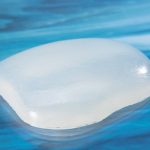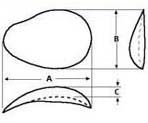A desireable male chest is usually defined by having well defined and fuller pectoralis muscles. For a body builder, model or anyone that does weightlifting to any serious degree, pectoral definition is the cornerstone upon which a great male body is built. Pectoral muscles due to their size and attachment to the arms is one of the easier muscles to build. Through the enlargement of both the major and minor divisions of the muscle, most men can usually develop adequate pectoralis fullness and thickness.
But developing the pectoralis muscle for some is not so easy. Whether it be one’s genetics or lack of time or commitment to the development process, a shortcut to achieve a better defined chest is appealing. Pectoral implants have been available for some time to those who are unable to develop the desired thickness of their chest muscles.
While the concept of an implant in one’s chest may seem unnatural for a man, the subpectoral (under the muscle) location of the implant gives a fairly natural look. Being completely under the muscle (unlike a breast implant in a female in which half of the implant is beyond the lower border of the muscle), one’s pectoral muscle is pushed out so that is actually what you see and feel. For a man with poor or ill-defined pectoral muscle size, the implant can easily give better bulk. In the already muscular male, pectoral implants produce the best results since the muscle is already fairly developed. That is a key point…pectoral implants can only highlight what you already have. You can’t go from a completely flat chest to a chest that looks like a professional bodybuilder. That is not a realistic expectation from pectoral implants.
Like the breast implant in breast augmentation, the pectoral implant in male chest augmentation is key. Determining the correct shape and size of implant to be used is as important as the surgical technique in placing it.If the implant size is incorrect or the shape is wrong, the result of even the most technically perfect surgical procedure will not produce the best aesthetic result.


Some male patients have chest shape issues such as asymmetry or congenital and traumatic deformities that will not be bestserved by the shape and size of off-the-shelf implants. While some modifications can be easily done during surgery to shape an implant, custom implants are often better. These custom pectoral implants can now be made through the use of a moulage or mold kit. Manufacturers provide the kit which enables an elastic mold to be made of the patient’s chest from which an implant can be custom made. These custom designed pectoral implants can help an abnormally-shaped chest by providing more projection or fullness to specific areas of the implant which can not be done by cutting down a stock implant.
Dr. Barry Eppley
Indianapolis Indiana



